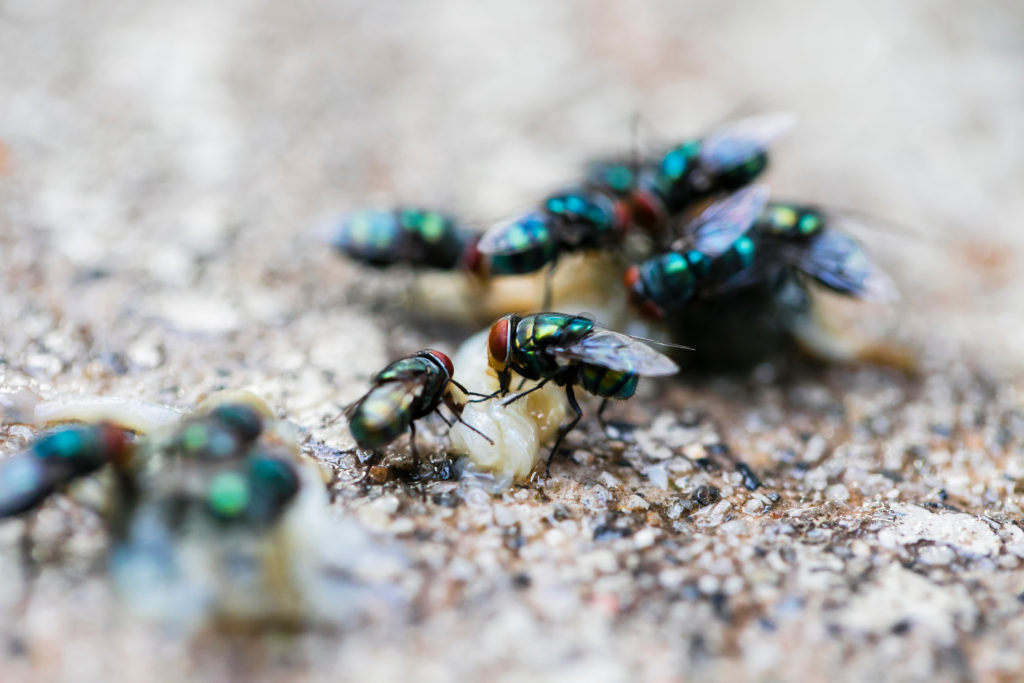Fly Pest Control Service
Did you know that there are over 100,000 known species of fly worldwide?
Flies are a particularly nasty pest to have infest your home. This is partly due to the fact that they can appear in such great numbers and be very unsettling. However, there is also a more concerning aspect with flies, which is that they can spread diseases such as salmonella and E.coli leading to food poisoning and other associated health risks.
Flies can also be tricky to remove once an infestation has taken hold in a property so the most important thing is to try and understand how to spot a problem as early as possible to prevent excessive breeding and large volumes of flies from breeding.
DALPEST Pest Solutions have multiple solutions for fly problems which are becoming out of control, however as pest control experts, we also have effective methods for preventing fly populations from growing in the first place.
We have created an easy to read guide to flies, this contains everything you need to know about this particular pest – including the key signs of fly activity in your home, a run-down of the most common species of flies found within the UK, and what to do if you suspect you have a problem that requires treating.
Flies tend to be a seasonal problem and will unlikely affect home owners and businesses in the coldest months of the year. You can expect flies to be a bigger problem in the warmer summer and autumn seasons. There may be some variations depending on the species of fly, for example cluster flies, however most of us will recognise that we generally see more flies when the weather is hot.
The biggest clue that you have a fly problem is seeing lots of flies. It might sound silly, but the evidence speaks for itself with this sort of pest. This could be live insects or also dead ones, they can build up on window sills faster than you would imagine. Fly infestations can develop very quickly due to the speed with which they breed. Acting quickly is key, so if you have evidence of a fly problem in your property make a call to the professionals to help you resolve it.
- Physical sightings: As mentioned seeing lots of flies in one room or clustered together is all the evidence you need of an infestation.
- Maggots: Where there are lots of flies there will also be maggots. They are most likely to be found in dark corners or damp areas of a property.
- Black spots: Fly faecal matter will be deposited around wherever there are lots of flies. Over time these black spots can build up on window sills or around bin areas.
Preventing flies
Many pest related problems can be avoided with good prevention techniques. Flies are no exception to this. There are a few things that you can do to try and stop problems occurring in the first place.
- Keep rubbish bins and bags closed and emptied regularly
- Apply window or door fly screens during the summer
- Keep food items covered up
- Use internal fly traps
- Use electric fly killers (commercial or industrial spaces only)
- Invest in fly sprays
None of these methods are guaranteed to prevent all flies, but they can help prevent bigger problems from starting.
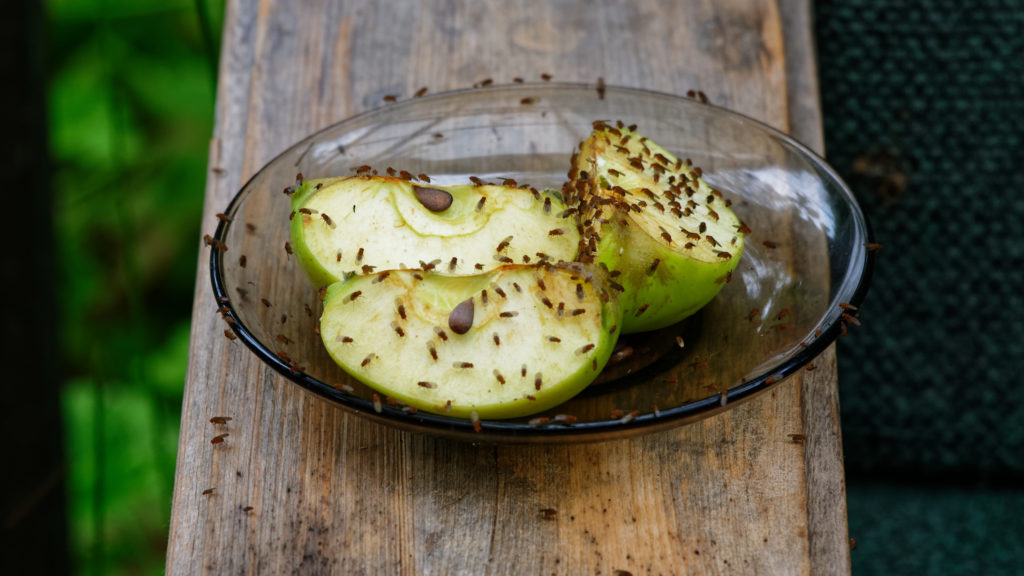
How DALPEST pest solutions deal with flies
Assess the problem
Identify the fly species
Treatment
There are a number of effective treatment methods for dealing with flies.
Wherever possible DALPEST Pest Solutions believe in the use of non-toxic or humane techniques for managing pests, however sometimes the use of chemical or insecticide treatments is the most effective solution. If this the case then we will advise you about what is required on the day of treatment.
You can be assured that as an active member of the BPCA (British Pest Control Association) all of our technicians are experienced in their roles and equipped to find the right solution for our customers pest problems.
Spray Treatment: If an infestation is particularly bad, or established then you pest control company may advise the use of an insecticide spray treatment. This would be performed by trained operatives and will involve treating the rooms where the issue is present. The chemical will kill the live flies, any eggs and larvae.
Smoke Bomb: DALPEST Pest Solutions are also able to offer the use of smoke bombs for treating flies. These can be very successful when treating species like cluster flies. The smoke is activated and penetrates the room over a prolonged period of time. The smoke contains a chemical which then eradicates the insects.
Fly Killer: These are the perfect option for commercial properties and for areas where there is high public traffic indoors. There are two styles of fly killer available and they prove very effective during the summer months at keeping the flies at bay.
- Kill grid – these units work by attracting the flies to a UV light. The bright lights draw the flies to the unit and then an electrified grid inside kills them instantly creating a small zapping noise.
- Glue board – these are supplied with either UV fluorescent bulbs, or UV LED lights, however the difference is that the flies get trapped inside and become stuck to a board.
What to do if you suspect you have a FLY problem
If you are in need of pest control to help with your flies then please get in touch with us. DALPEST Pest Solutions have been established since 2017 and we have a dedicated and professional team of technicians with the knowledge and capabilities to help solve your pest problem.
In keeping with our tips to avoid encouraging flies, undertake a good clean of your property where you are seeing the flies. Ensure that absolutely no food sources are left out in the open or are accessible, for flies to stop or lay eggs on.
Our first task is to understand the severity of your infestation. A member of our team will come to your property to help identify the types of flies you are having issues with, and also the scale of the problem.
Give us a call today on 0333 2026 223 or complete the form below to discuss your requirements. You can also call us for advice – we are friendly and knowledgeable.
DALPEST work with our customers to find the most effective solution for you. Every pest problem is different that’s why our tailored recommendations are based on visiting your property prior to quoting any works.
Why choose Dalpest pest solutions?
Rapid response available - we get to you quickly
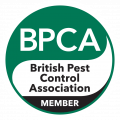
British Pest Control Association (BPCA) members

Highly-skilled, experienced pest control technicians
100% child, pet and environment friendly
Education, not just eradication

Five-star customer service for all pest problems
Why CHOOSE Dalpest PEST SOLUTIONS?
Rapid response available - we get to you quickly

British Pest Control Association (BPCA) members
100% child, pet and environment friendly

Highly-skilled, experienced pest control techs
Education, not just eradication

5-star customer service for all pest problems
WHAT ARE THE COMMON SPECIES OF FLY?
It would be impossible to list every known species of fly.
This list has been compiled based on the most common flies in the UK, and the ones which are likely to require professional pest control methods to help eradicate if they become out of control.
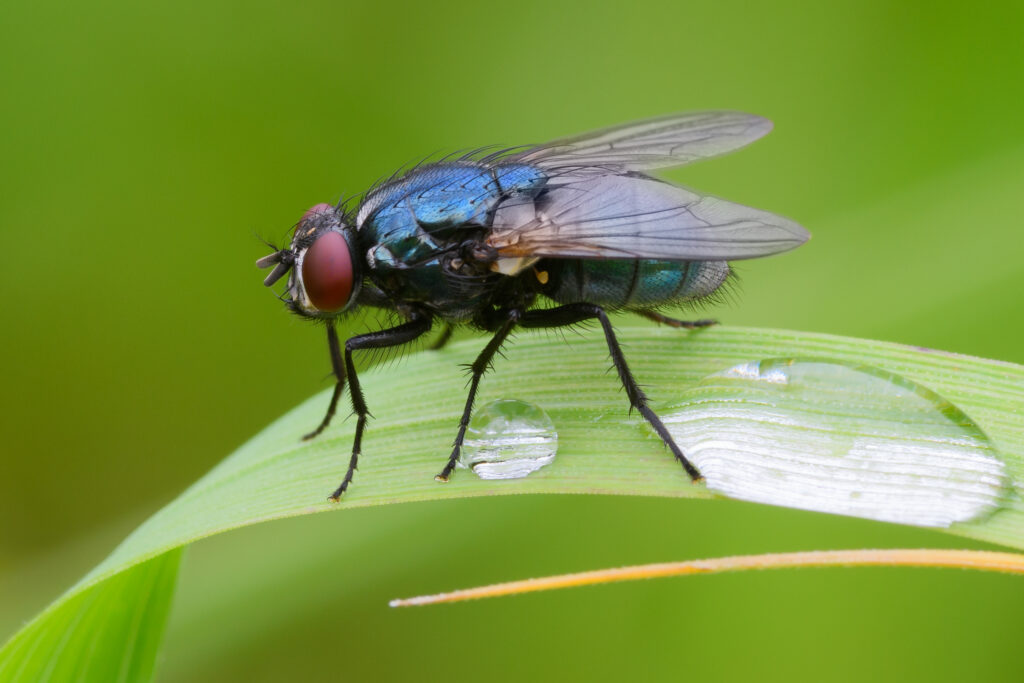
More commonly known as bluebottles, greenbottles or the flesh fly. The bold green and blue colour of them makes them distinctive and easily identifiable. These flies will enter properties and buildings searching for breeding sites, they are primarily drawn to food manufacturing sites. Their preference is to breed on rotting or decaying meat, animal matter or excrement.
The female flies have an extraordinary sense of smell and they lay eggs in batches of approximately 180 eggs at a time. These usually hatch within 1-2 days.
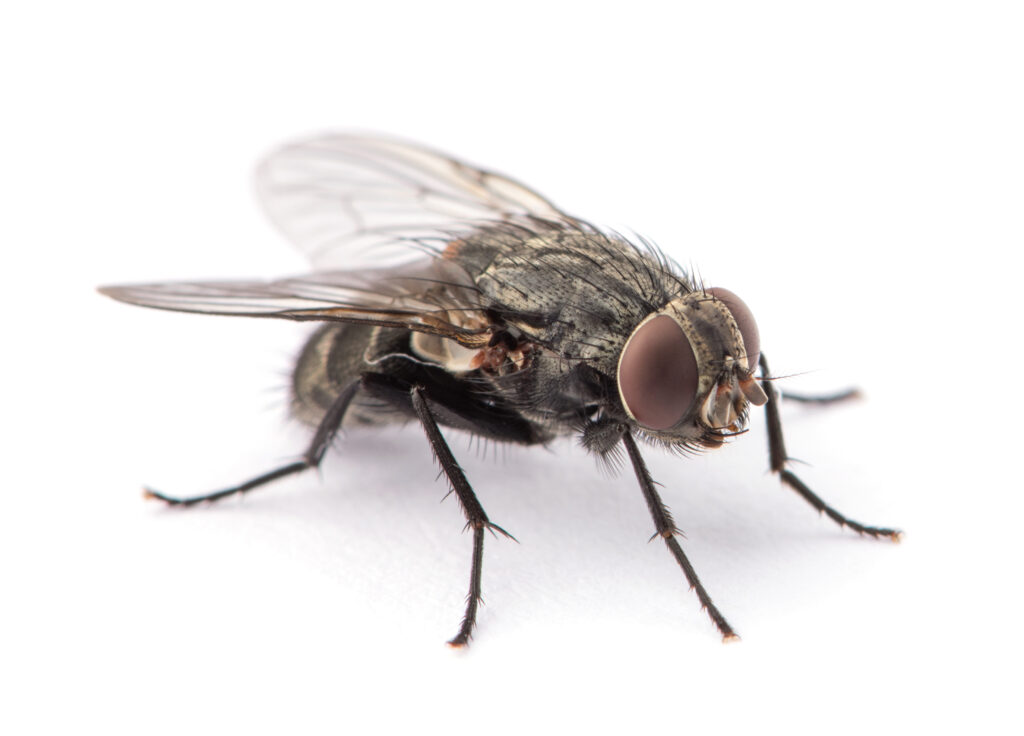
House flies are black in colour with red eyes and quite large with adults being around 6mm in size. They are very common as their name would suggest and the females are capable of laying up to 150 eggs at any one time. House flies are big potential spreaders of disease, mainly because their ideal breeding and feeding grounds resemble that of the blow fly. They have been known to transmit parasitic worms and other diseases, making them associated with being dirty.
Although they are called a house fly, these flies are also frequently found in manufacturing sites, particularly where livestock is housed or located. This can cause problems for business owners and so it is important to have preventative techniques in place.
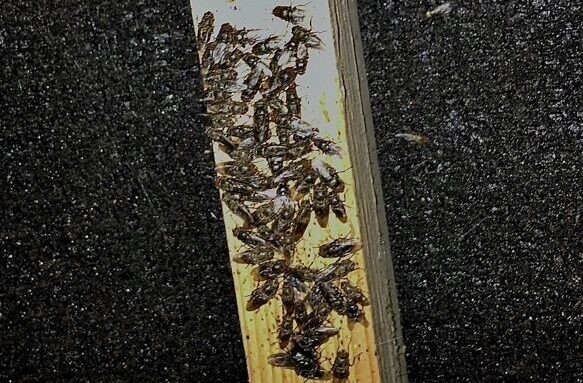
These can often be the most concerning looking of all the flies, because, as their name suggests, they cluster together in large groups. These are harmless to humans but if there is an infestation there will be a lot of flies in one place. They look similar to house flies and adults are about 6mm in size so they can be mixed up easily.
Cluster flies are most active heading in to the Autumn months and particularly within more rural areas. They have two key behaviours, firstly they will gather on sun lit windows and areas outside of houses to absorb warmth during the day. Then as the light fades they will crawl inside, the majority of cluster flies are found within loft spaces for this reason.
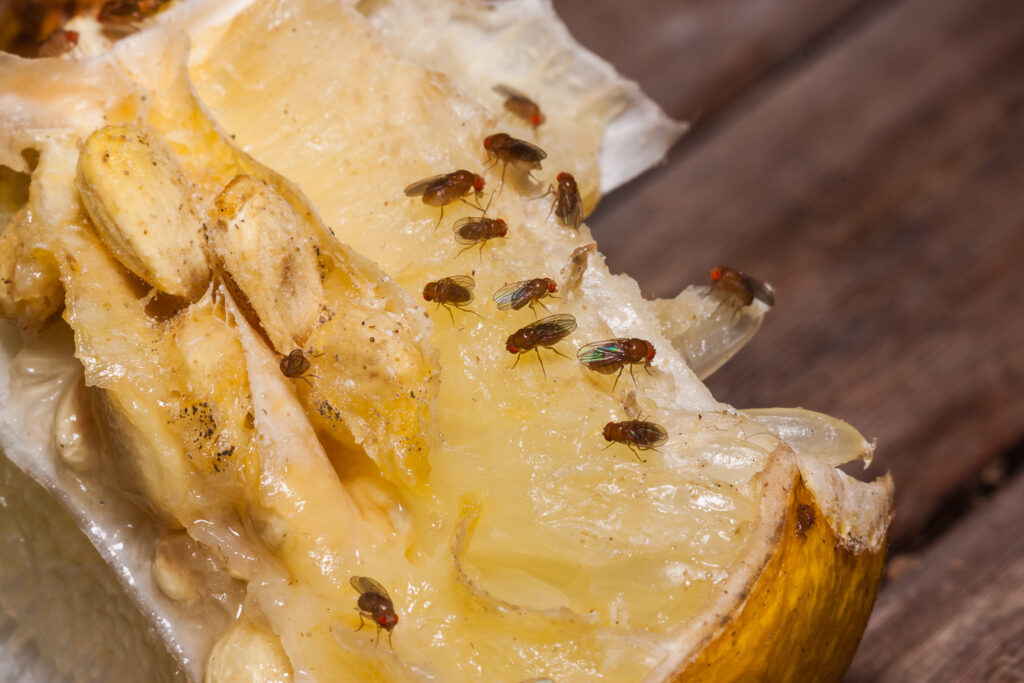
Fruit flies are everyone’s nightmare in the summer months. They are very rapid breeders and are known to be drawn to rotting fruit and vegetables and sour milk products so they can often be found in kitchens. They are small and have distinctive red eyes making them easily to identify.
Female fruit flies can lay up to 500 eggs per day and they are clever, the eggs will be laid on specific substances that will become food for the hatching larvae. In their natural habitat outdoors they are not considered a pest, however if they come indoors and temperatures are high (30 degrees) then there can be many flies in one place.
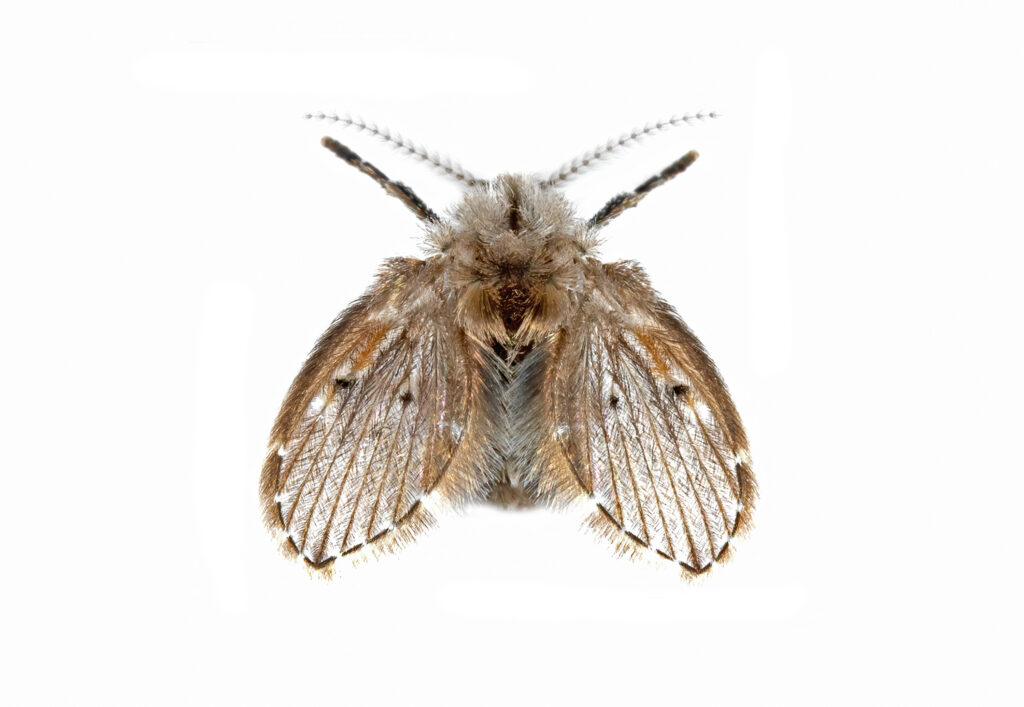
Drain fly are a very common problem in this country, these tiny flies look very similar to moths up close, this is due to their small fuzzy bodies. A drain fly is similar in size to a fruit fly around 1.5mm – 5mm long.
The reason these flies are a tricky pest is because in a 48 hour period they can lay and hatch up to 300 eggs. It may not be immediately obvious that you have drain flies present at your property to start with, however as the number increases you will spot more of them around the house. You are most likely to find them in kitchens and bathrooms, and any areas where the drains may have been sitting for any length of time. This can be a real problem during the summer months when drains begin to dry out.
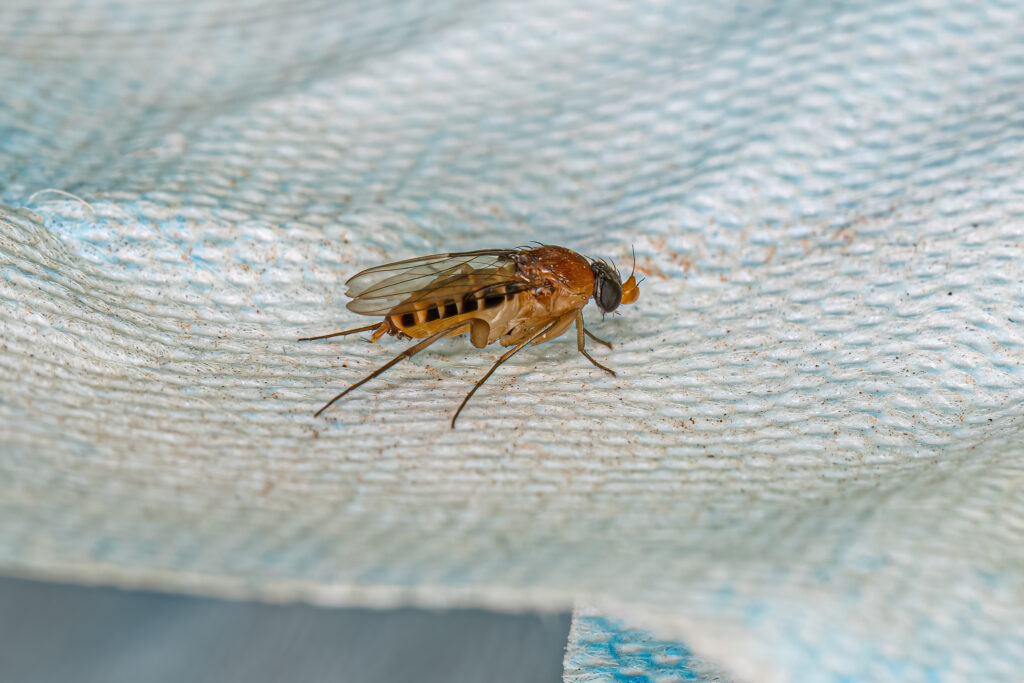
Phorid flies are the ones which most closely resemble fruit flies and people can often confuse the two.
One clear difference between them is the ‘humpbacked’ appearance that the phorid fly possesses. They may even be referred to as humpbacked flies. One of the things that can help you to identify a phorid fly, is their tendency to run across surfaces rather than to fly immediately.
This is a unique characteristic of this fly species.
Facts about FLIES
While all fly species are different there are a few commonalities among species that are worth noting.
- Speed of reproduction is rapid among all species of fly.
- Flies can see behind them.
- They don’t have teeth.
- They are fussy eaters, each fly species has its own food preferences.
